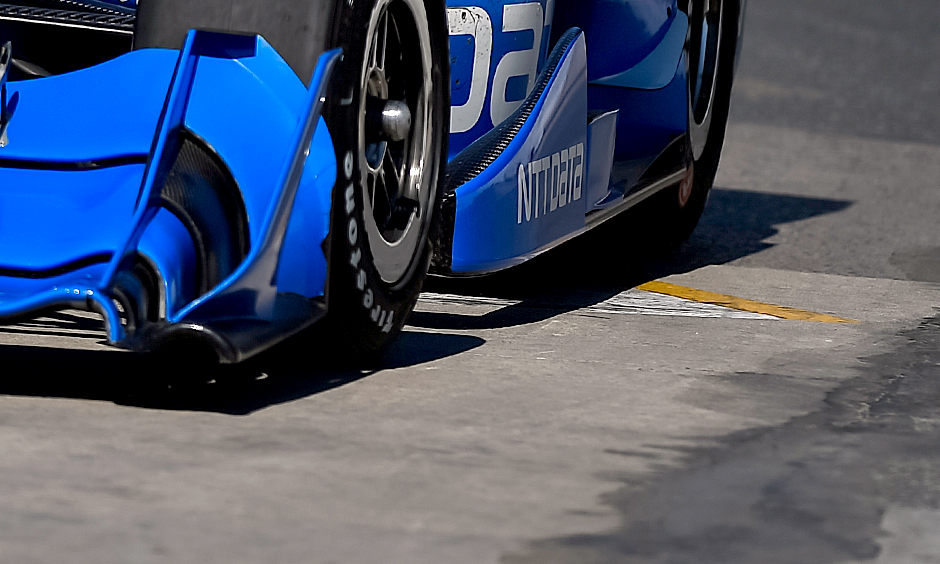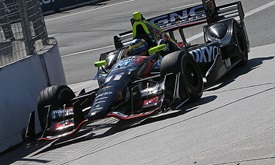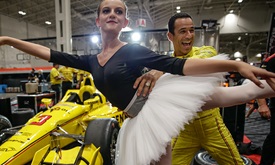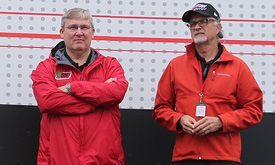Drivers, Firestone always working to get a grip at Toronto
JUL 16, 2016
TORONTO -- The only predictable thing about the grip at the Honda Indy Toronto is that the drivers can never expect the grip to be predictable.
With its slippery concrete patches, combination of new and old pavement and notorious bumps in just the wrong places, getting the most out of Firestone's rubber always presents a huge challenge for the drivers in qualifying and the race on the 11-turn, 1.786-mile street course at Exhibition Place.
“It's one of the toughest places we go to because of the track changes, the tarmac changes and the grip changes,” said No. 22 PPG Automotive Refinish Team Penske Chevrolet driver Simon Pagenaud. “But that's what makes it special. It's like dancing with the car. You go into the corners and you're sliding and you recover.
"I love it because it’s different and I wouldn't change it for anything. Firestone does a really good job of bringing tires here that can go 30 laps in a stint.”
Because there's no testing at street circuits, Verizon IndyCar Series tire supplier Firestone brings the same rubber to Toronto that the teams use at the street races in St. Petersburg, Long Beach and Detroit.
While that means the tires aren't made specifically for each circuit, it gives the teams and drivers a consistent feel from the rubber on all street courses.
“There's a lot of benefit to them having a known tire,” said Dale Harrigle, chief engineer and manager of race tire development, Bridgestone Americas. “If we changed the tires event to event, it would be quite difficult for the teams because they can't come here and test. We give them a known tire and they can set up the car the best they can for the circuit.”
The big problem with Toronto is that the polished concrete surfaces – though some were sandblasted overnight Friday to taper their slickness – negate one of the two ways a racing tire generates grip.
The Firestone tires used in the Verizon IndyCar Series have adhesive properties that stick them to the surface and a “mechanical keying” where the soft rubber flows into the holes in the pavement. Both grip generators work well on porous surfaces like asphalt, but the smooth concrete at Exhibition Place offers little for the rubber to bite into and the drivers can only count on adhesive grip to stay stuck to it.
“There's really not much we can do about it,” Harrigle said.
“You can bias the tire a little bit to have a bit more adhesion than mechanical grip, but when we use the same street course tire across the events, we try to come up with the best solution for everywhere.”
The most difficult combination of an uneven surface, asphalt and concrete at Toronto is in Turn 1, said No. 83 Novo Nordisk Chevrolet driver Charlie Kimball.
“There's a bump in the braking zone going into Turn 1, so you have no grip because the front tires are in the air, and then you have a lot of grip when they come back down. Then when you get to the middle of the corner, the grip disappears and you just kind of slide and the car gets really light and then it grips up again,” Kimball said.
“You know the grip comes back, it's just a question of how much is there when it comes back and how fast you're going and if you slide right out to the wall or you've underperformed a little bit.”
Turns 3, 5 and 8 also have similar slippery concrete patches making them a bit of an adventure every lap.
Things don't get easier for the drivers when they emerge from pit stops on cold tires. With the pit lane now moved to the left side of the start-finish straight and the pit exit immediately after Turn 11, the drivers arrive at the tricky first corner much quicker on cold rubber after slapping on new Firestones. To make matters worse, they now hit the big bump they avoided last year when the pit exit was on the right side of the track and nearer Turn 1.
“You will be on the racing line so it won't be as slippery as it was last year when you were on the inside, but I think it will be more difficult, for sure,” said Pagenaud, the 2016 Verizon IndyCar Series championship leader. “I always look at the positive so I think it's going to make for a good show.”
And it doesn't get any better on the high-speed backstretch run down to Turn 3, where the drivers must decelerate quickly from 185 mph to negotiate the slow, 90-degree right-hander.
“It's tricky because you leave the pits and go through Turn 1 and heat the tires up a bit, but then they have a chance to cool off all the way down the straight to Turn 3, so you have to watch it and it's never easy,” said Tony Kanaan, driver of the No. 10 NTT Data Chevrolet.
“In Toronto, you have to pick your battles and see where you really need the car to work really well and where you just need to hang on.”
NBCSN will telecast today’s qualifying live (1:30-3 p.m. ET). The race airs live (2:30 p.m. ET Sunday) on CNBC with a re-air at 5:30 p.m. ET on NBCSN. Qualifying and the race also air live on the Advance Auto Parts INDYCAR Radio Network, including on IndyCar.com.



















